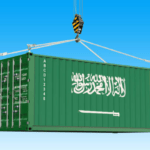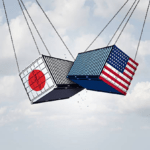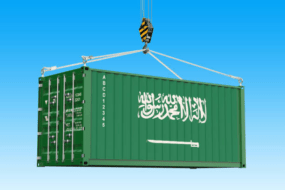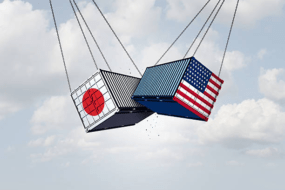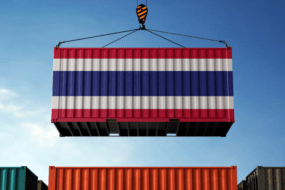- Home
- Trade News
- Exports From Vietnam Face Fres ...
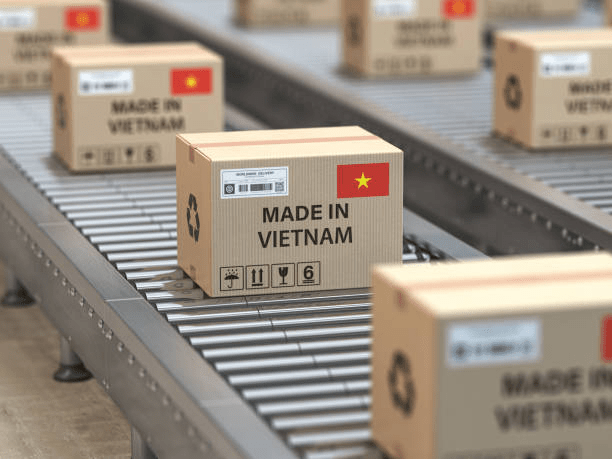
Vietnam’s export sector has been riding a wave of success for years, cementing its position as a key global supplier of electronics, textiles, agricultural products, and more. But as 2025 unfolds, new challenges are emerging — some expected, others less so.
Regional trade policies are shifting. The US is adjusting tariffs, China is tightening agricultural inspections, and Vietnamese exporters are being forced to rethink their strategies. Meanwhile, other Southeast Asian countries are making their moves, reshaping trade dynamics in ways that could benefit or hinder Vietnam’s position.
It remains to be seen whether this is just a temporary shake-up or the start of a bigger change for global trade as reflected in the region’s import and export data. One thing is clear: Vietnam’s trade landscape is entering a new phase, and businesses must be ready for what comes next.
Trump’s Imposed New Tariffs
Since returning to office in January 2025, US President Donald Trump has swiftly reintroduced tariff measures reminiscent of his first term. These actions include global steel and aluminium tariffs and a reciprocal tariff plan targeting countries with trade imbalances and non-reciprocal trade practices.
In February, Trump signed proclamations to reinstate a 25% tariff on steel imports and increase the aluminium tariff from 10% to 25%. These tariffs apply globally without exception, effective March 2025.
While some countries previously secured exemptions, Vietnam never received one, so its steel and aluminum exports have been subject to the full tariffs since 2018.
The aluminium tariff hike, in particular, may disproportionately affect Vietnam. Despite a 1.7% drop in aluminium exports to the US in 2024, Vietnam still exported 35,593 metric tons valued at US$142.9 million. The jump to a 25% tariff threatens to weaken this sector further.
The “Fair and Reciprocal Plan”
Trump introduced the “Fair and Reciprocal Plan,” directing US agencies to assess and impose tariffs on countries that apply higher tariffs, discriminatory taxes, or non-tariff barriers on US exports. With a 5.1% trade-weighted average tariff (compared to the US’s 2.2%), Vietnam faces heightened risks of new duties.
The plan also targets a currency challenge, a charge previously leveled against Vietnam in 2021. While the Biden administration dismissed the label, Trump’s return could lead to renewed investigations and penalties.
Vietnam-US Trade Relations
In 2024, the US became Vietnam’s second-largest trading partner (after China) and its top export destination. Bilateral trade surged 20.4% to US$149.6 billion, with Vietnamese exports comprising US$136.6 billion. Vietnam also climbed to sixth place among the US’s top import sources.
Key US imports from Vietnam include:
- Electrical machinery
- Furniture and bedding
- Footwear
- Apparel and accessories
Vietnam’s trade surplus with the US hit a record-breaking US$123.5 billion — an increase of US$18.9 billion from 2023. This surplus makes Vietnam a likely target for further tariffs.
As Trump’s trade policies take shape, Vietnam’s export-dependent economy may face mounting pressures, requiring strategic adjustments to navigate the shifting US trade landscape.
China Blocks Agri Exports From Vietnam
Vietnam’s agricultural exports have long been a crucial driver of the nation’s earnings, with China serving as its largest export market for fresh produce. However, recent regulatory changes have created significant barriers, threatening Vietnam’s dominance in the sector.
Data from the National Statistics Office shows that Vietnam-China trade remained moderate in the first two months of the year, surpassing US$31 billion in value. However, while imports from China rose by 20.7% year-on-year, Vietnamese exports to China declined by 2.1%, signalling growing trade challenges.
Chemical Residue Inspection
One key area of concern for Chinese regulators is the presence of chemical residues in Vietnamese fruits and vegetables. Multiple shipments of dragon fruit, durian, and longan have been flagged for exceeding pesticide residue limits, leading to rejected consignments and export suspensions.
- Chinese authorities have reinforced random testing and batch-by-batch inspections at major border crossings.
- Exporters now face stricter documentation requirements, including comprehensive pesticide use records and farm-level traceability.
- Several Vietnamese agricultural firms have been placed on temporary suspension lists, limiting their access to one of their most important markets.
The heightened scrutiny has forced Vietnamese export industries to adopt stricter quality control measures, but compliance remains a challenge, particularly for small-scale farmers who lack access to advanced agricultural technologies.
Drastic Decrease in Vietnam Exports
As a result of these restrictions, Vietnam’s exports of fruits and vegetables to China have suffered a drastic drop. Recent Vietnam export data from the Ministry of Agriculture and Environment shows that the total export value of fruits and vegetables in the first two months of the year reached US$724 million.
- Compared to last year, fruit and vegetable exports to China dropped by 43%.
- Meanwhile, exports to the United States increased by 38%, and exports to Thailand rose by 5%.
- The seafood and fisheries sector has also been affected, as China enforces stricter antibiotic residue checks on imported fishery products.
This downturn threatens Vietnam’s standing as a key agricultural exporter in Southeast Asia, raising concerns about the sector’s long-term sustainability.
Short-Term Solutions
In response to these challenges, the Vietnamese government has worked closely with foreign companies and local producers to improve food safety standards and enhance export procedures. Key measures include:
- Strengthening food safety control by increasing training for farmers on pesticide use and organic farming practices.
- Developing high-tech agricultural zones to ensure cleaner, more regulated production.
- Negotiating with China to establish clearer guidelines and reduce arbitrary trade disruptions.
- Exploring alternative markets, such as South Korea, Japan, and the European Union, to reduce dependence on China.
While these efforts aim to stabilise Vietnamese exports, the future remains uncertain. If Vietnam’s economy is to maintain sustainable economic growth, exporters must diversify their strategies and strengthen trade agreements to mitigate future disruptions.
India Offers Advice for Boosting Exports From Vietnam
As Vietnamese exports face increasing pressure from regional and global trade barriers, India has made strategic recommendations to help Vietnam strengthen its export industries.
Indian trade officials have emphasised the need for Vietnam to better understand global market demands, enhance competitiveness, and actively participate in trade events. These strategies could help Vietnam increase its export earnings despite challenges in the global economy.
Consumer Preference Analysis
One of India’s key recommendations is that Vietnam conduct an in-depth consumer preference analysis for its target markets.
Many Vietnamese goods, particularly in the textiles and garments, electronic products, and agricultural sectors, face stiff competition from other countries that have already tailored their exports to meet specific consumer needs.
- India’s trade experts highlight the importance of studying purchasing behaviour in key markets, such as South Korea, Japan, and the United States.
- Vietnamese exporters must align their products with global quality standards to strengthen their position in international trade.
- Strengthening branding and product differentiation will help Vietnam secure higher-value export contracts.
By investing in market research and consumer trend analysis, Vietnamese businesses can better position themselves in the competitive global trade landscape.
Solid Trade Relations Between Vietnam and India
India remains one of Vietnam’s main export partners and its largest trading partner in South Asia. Two-way trade turnover between the two countries has reached significant figures in recent years.
The strong economic ties between Vietnam and India have opened doors for foreign direct investment and export growth across multiple industries.
- India is a key buyer of Vietnam’s top export goods, including textiles, seafood and fishery, wood, electronics, and machinery.
- The two countries have strengthened economic relations through multiple trade agreements and foreign investment deals.
- Vietnam has benefitted from India’s expertise in technology and industrial development, creating opportunities for collaboration in manufacturing, pharmaceuticals, and IT services.
Despite this strong partnership, Vietnam’s imports from India have decreased in the first half of 2024 due to shifting trade policies and foreign investment trends.
However, experts believe further cooperation and investment incentives could help both nations navigate current trade challenges.
Sufficient Investment Opportunities
India’s trade specialists also stress that Vietnamese businesses could expand their presence in India by tapping into its growing consumer base and diverse market opportunities.
Foreign companies establishing production facilities or supply chains in India can benefit from cost advantages, a skilled labour force, and strong trade agreements.
- Sectors with high potential include agriculture, technology, pharmaceuticals, and renewable energy.
- Vietnam can increase exports of agricultural products, including coffee and seafood, to India’s growing food and beverage market.
- Strengthening the two countries’ logistics and supply chain infrastructure could improve trade surplus and create new export opportunities.
While Vietnam’s economy continues to evolve, India’s recommendations provide a strategic roadmap for overcoming export challenges and securing long-term economic growth.
If Vietnam successfully implements these suggestions, it will be better positioned to compete in global trade and maintain a strong foothold in Southeast Asia’s export market.
Thailand To Discuss Rice Exports With Vietnam
The global rice market is facing a downturn as prices continue to fall, affecting major exporters like Vietnam, Thailand, and India. As the third-largest rice exporter, Vietnam closely monitors the situation while considering regional trade strategies to maintain export earnings.
Thailand has expressed interest in discussing potential cooperation with Vietnam and India to address pricing issues, stabilise supply chains, and ensure sustainable trade agreements in the rice industry.
Three-Way Cooperation
Thailand seeks a three-way partnership with Vietnam and India to strengthen their collective position in the global rice trade. Given the significance of rice exports for these export partners, a unified approach could help counteract market fluctuations and create a more resilient supply chain.
- Vietnam and Thailand compete in the global rice market, but closer cooperation could lead to joint strategies that support price stability.
- As the world’s largest rice exporter, India plays a key role in shaping global rice trade policies. Collaborating with India could help Vietnam and Thailand navigate the global economy more effectively.
- Trade discussions could focus on synchronising supply volumes, maintaining quality control, and implementing competitive pricing strategies to prevent further price drops.
Vietnam has long been recognised for its high-quality rice exports, making it a key player in Southeast Asia’s agricultural sector.
Strengthening economic relations with Thailand and India could help Vietnam increase exports while ensuring a more stable market environment for its rice industry.
Exports From Vietnam Pivot Following US Tariff Changes
The global trade landscape is shifting as the United States implements new tariff policies, posing a significant challenge for Vietnamese exports. With Vietnam’s economy heavily reliant on US trade, businesses are bracing for a difficult year as they navigate the impact of these changes.
The evolving US-Vietnam economic relations highlight the risks and opportunities for Vietnam’s export industries, forcing exporters to adapt to maintain their competitive edge.
Vulnerability of Vietnam’s Strong US Trade Relations
Vietnam has established itself as a key supplier of export goods to the United States, with Vietnamese exports accounting for nearly 30% of its GDP. This dependence makes the country vulnerable to shifts in US trade policies.
- The United States remains Vietnam’s largest export market, particularly in electronics, textiles, and agricultural products.
- Any increase in tariffs could reduce Vietnam’s total exports, making it harder for Vietnamese businesses to compete.
- The Vietnamese government is pressured to implement policies that protect the manufacturing sector and maintain export earnings.
While Vietnam has benefited from foreign direct investment (FDI) as companies relocate their supply chains from China, higher tariffs could slow this momentum, affecting both foreign companies operating in Vietnam and domestic exporters.
Focus Industries
Several major export products are at risk due to tariff adjustments. Industries that are highly dependent on the US market include:
- Electronics manufacturing, which accounts for a large portion of Vietnamese exports
- Textiles and garments, a traditional industry that employs many Vietnamese workers
- Footwear and leather products, which have seen consistent growth in export earnings
- Furniture and wooden products, a sector that relies on foreign investment and exports to the US
- Seafood and fishery products, another key industry that could suffer from restricted trade agreements
- Fruit and vegetables, which have recently gained popularity in the US market
Vietnam’s manufacturing hub status has made it an attractive location for foreign investment, but the latest trade developments could slow growth in these key export markets.
Regional Effects of New Tariffs
Vietnam is not the only country affected by the US trade policies. Other Asian exporters, including Malaysia, South Korea, Japan, Taiwan, and the Philippines, face challenges maintaining long-term US market access.
- Malaysia and South Korea have strong export industries that could be impacted by increased tariffs.
- Japan and Taiwan are key suppliers of electronic products and machinery, making them vulnerable to changes in US policy.
- The Philippines, another rising manufacturing hub, is closely monitoring the situation.
The changing trade environment means these countries must reassess their economic strategies to protect their export earnings.
Risk Management
To counter the effects of US tariffs, Vietnam must explore several solutions to maintain its export growth.
- Diversifying export markets beyond the United States to reduce dependence on a single trade partner
- Tapping into free trade agreements (FTAs) to secure better conditions for Vietnamese goods in other international markets
- Strengthening exports of fruit and vegetables, which have strong potential in other countries such as Japan, South Korea, and the European Union
- Encouraging foreign direct investment from new partners to support Vietnam’s economy despite the changing trade landscape
These strategies will allow Vietnam to protect its economic growth while ensuring a steady flow of foreign investment into key industries.
Healthy Competition
Despite the challenges posed by US tariffs, the Vietnamese market remains resilient. The Vietnam-US trade relationship is not purely adversarial, as both economies have complementary strengths.
- Vietnam benefits from increased income due to its strong manufacturing sector, while the US gains access to affordable consumer goods.
- Vietnam’s imports from the US, including computer parts, crude oil, and machinery, contribute to the two-way trade turnover.
- The two countries continue to explore mutually beneficial trade agreements, even as new tariffs are introduced.
While the next year will be challenging, Vietnam’s ability to adapt and innovate will be key in sustaining its export-driven economy.
Recap: Major Exports From Vietnam
Vietnam’s export industry has seen remarkable growth, positioning the country as a key player in global trade. With its strategic location, skilled workforce, and numerous free trade agreements (FTAs), Vietnam continues to expand its presence across various sectors.
Automotive
Vietnam’s automotive industry is gaining momentum, with a particular focus on electric vehicles (EVs). Companies like VinFast are spearheading Vietnam’s entry into the global EV market, targeting regions such as North America and Europe.
Coffee
Vietnam is the world’s second-largest coffee exporter, supplying robusta beans to major markets such as Europe and the United States. Despite fluctuations in global coffee prices, Vietnam maintains its strong position in this highly competitive industry.
E-Commerce
Vietnamese businesses increasingly sell products on platforms such as Alibaba, Amazon, and Shopee, reaching international consumers. The rise of cross-border e-commerce has allowed small and medium-sized enterprises (SMEs) to access global markets, particularly in Southeast Asia, Europe, and North America.
Electronics
Vietnam is a major hub for electronics exports, producing a wide range of consumer electronics, semiconductors, and electrical components. The country’s electronics sector benefits from foreign direct investment (FDI) and continues to expand its production capabilities.
Manufacturing Hub
Vietnam has established itself as a manufacturing powerhouse, attracting investment from global brands seeking alternatives to China. Its low labour costs, stable political environment, and trade-friendly policies make it a preferred destination for manufacturing exports.
Pharmaceuticals
Vietnam’s pharmaceutical industry is evolving, with increasing exports of generic medicines and medical equipment. The country invests in biotechnology and research to develop a stronger global pharmaceutical supply chain presence.
Textiles and Apparel
Vietnam is one of the world’s largest exporters of textiles and apparel, supplying major brands in the United States, Europe, and Japan. The industry benefits from competitive production costs and favourable trade agreements, making Vietnamese textiles highly sought after.
Key Export Markets
Vietnam’s main export destinations include:
- United States: Vietnam’s largest trading partner, importing electronics, furniture, and textiles
- European Union: A key market for coffee, seafood, and footwear
- China: A major partner in agriculture, raw materials, and electronics
- Japan and South Korea: Automotive parts, semiconductors, and industrial goods importers
- ASEAN nations: Vietnam benefits from strong regional trade within Southeast Asia
Multiple FTAs
Vietnam has signed numerous free trade agreements (FTAs), providing preferential market access to major economies worldwide. Some of the most significant FTAs include:
- Comprehensive and Progressive Agreement for Trans-Pacific Partnership (CPTPP)
- EU-Vietnam Free Trade Agreement (EVFTA)
- Vietnam-UK Free Trade Agreement (UKVFTA)
- ASEAN Free Trade Area (AFTA)
These trade agreements help Vietnamese businesses expand their global reach while reducing tariff barriers in key export markets.
Regional Comprehensive Economic Partnership (RCEP)
As a member of the Regional Comprehensive Economic Partnership (RCEP), Vietnam benefits from enhanced trade cooperation with 14 other Asia-Pacific economies, including China, Japan, South Korea, and Australia. This agreement strengthens Vietnam’s position in regional supply chains.
Vietnam’s export sector continues evolving, facing opportunities and challenges in an increasingly competitive global market. With its strong manufacturing base, expanding trade networks, and commitment to economic growth, Vietnam is well-positioned to maintain its status as a leading export hub in the region.
Conclusion: Vietnam’s Export Industry at a Crossroads
Vietnam’s export sector is at a defining moment. While the country has built a strong reputation as a manufacturing and agricultural powerhouse, shifting US trade policies, tightening regulations in China, and regional competition are heating up, sticking to the old playbook won’t cut it anymore.
But challenges don’t mean falling behind—just changing. The key for Vietnamese exporters now is adaptability, which is all about staying ahead of market trends, adjusting to policy shifts, and making smarter trade decisions.
For businesses looking to navigate shifting trade policies, identify new opportunities, and stay ahead of market trends, TradeDataPro provides the latest global trade data, industry insights, and strategic analysis to support informed decision-making. With trade conditions shifting rapidly, staying informed isn’t just an advantage; it’s necessary.


